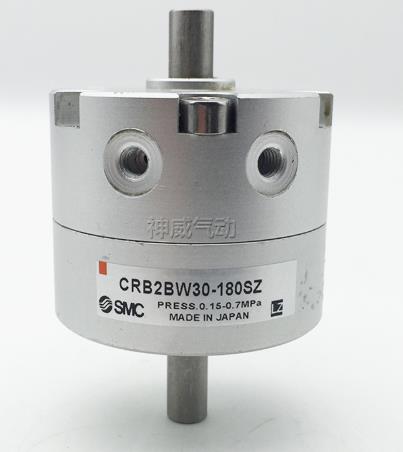Rotating cylinder, that is, a cylinder in which the intake and exhaust ducts and air guide heads are fixed, but the cylinder body can rotate relatively and act on the machine tool fixture and wire curling device. A cylindrical metal part that guides the piston in linear reciprocating motion.
Rotating cylinder Mainly consists of air guide head, cylinder block, piston and piston rod. When the rotary cylinder is working, external force drives the cylinder block, cylinder head and air guide head to rotate, while the piston and piston rod can only make reciprocating linear motion, and the air guide head is connected to the outside and is fixed.
Application fields: Rotating cylinders are mainly used in printing (tension control), semiconductors (spot welding machines, chip grinding). Its structure combines the actions of two rotating cylinders into one, and the blades The swing actuator can perform 2-stage and 3-stage rotation.

Rotating cylinder angle adjustment method
Plane rotation is an angular rotation based on a certain center point. For a common rotating cylinder, the rotation angle ranges from 1 to 180 degrees, with a maximum of 190 degrees. The rotation angle is controlled by adjusting the screw, and a buffer can also be installed to make the operation more stable.
The rotating (angle) pressing cylinder can complete the angular rotation while continuing to complete the pressing and clamping work, and can operate repeatedly. Commonly used in high-precision automated production workshops, suitable for installation and use in small space environments. Common ones include SRC corner cylinder, MK corner cylinder, ACK corner cylinder, etc. The compressed air passes through the rotating groove on the piston rod and the convex groove on the cylinder barrel. The rotation drive is carried out with the cooperation. When the angle of rotation changes, the stroke changes with the change of the angle of rotation, and finally the pressing work is completed.
Working principle of rotating cylinder
Step 1, reset. Air pressure (0.1-0.8MPa) is supplied from port B, and air is exhausted from port A at the same time. The piston and piston rod retreat backwards. When the piston hits the right end of the cylinder, it stops, and the piston rod end is at point a. This state It is the reset state.
Step 2, work. Air pressure (0.1-0.8MPa) is supplied from port A, and air is exhausted from port B at the same time. The piston rod and piston extend forward. The piston stops when it hits the front cover. At this time, the piston rod end is at point b, and the distance between a and a is the stroke S of the piston. This state is rotating cylinder< /strong>’s working status.
Repeat the steps in this cycle to make the cylinder rotate and the piston and piston rod move back and forth.






 WhatsApp: +8615857777578
WhatsApp: +8615857777578